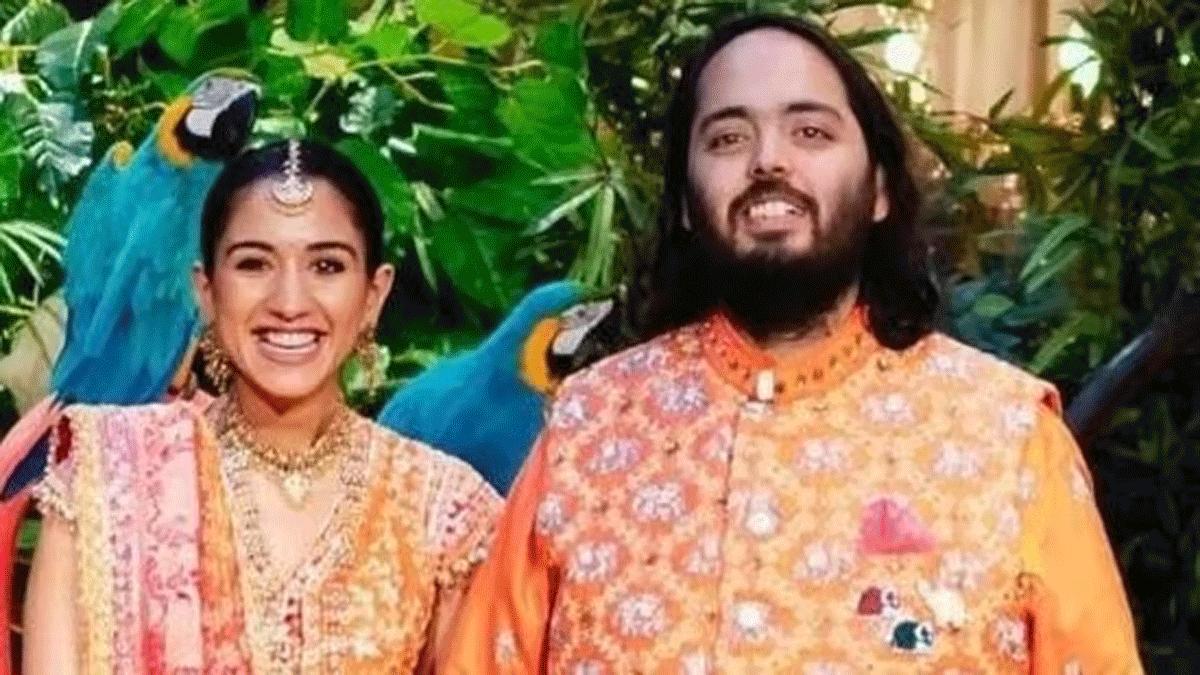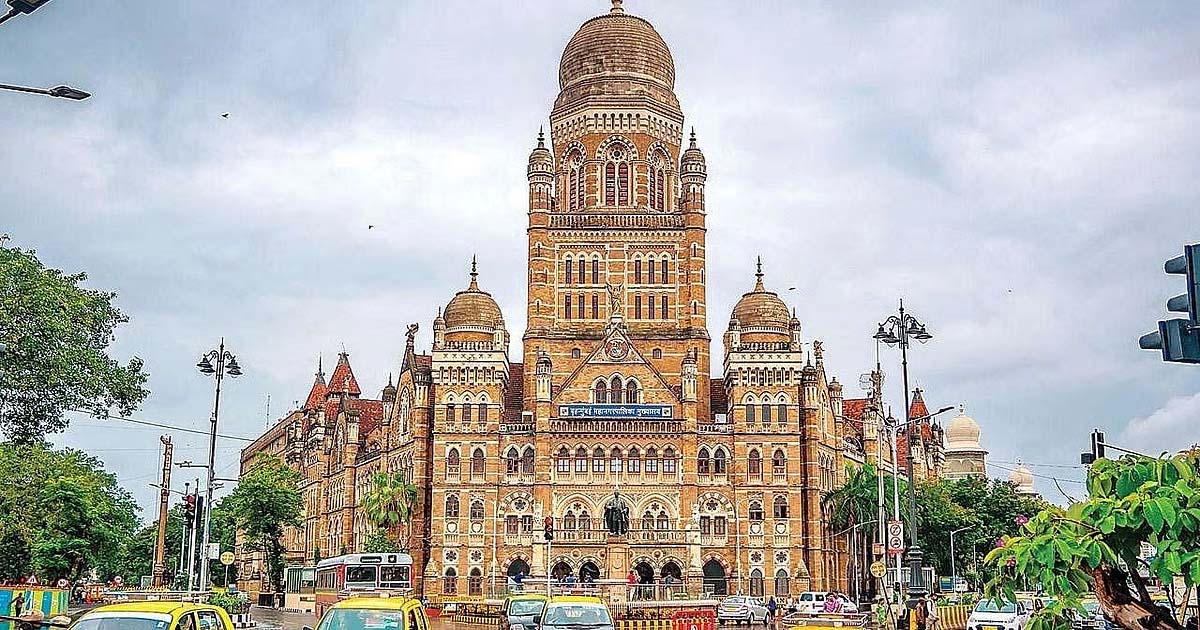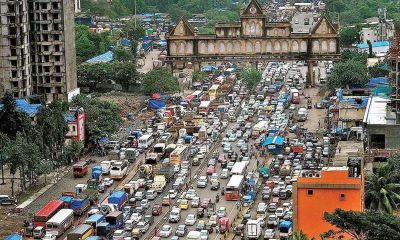Maharashtra
Anant Ambani And Radhika Merchant’s Grand Wedding Celebration Begins In Mumbai

The stage is set for the most powerful power wedding India has ever witnessed. On Friday Anant (29), son of Mukesh Ambani, whose personal wealth is reported to be a mind-boggling $115 billion, will tie the knot with his eight-year-old extremely pretty sweetheart Radhika Merchant (29), daughter of Encore Healthcare chief Viren Merchant . It was love at first sight for both of them and the chemistry continues to be on display at all photo shoots. The coming three days invitees will witness the most expensive wedding ever celebrated in the country.
There will be “Shubh Vivah” on Friday, “Shubh Ashirwad” on Saturday and “Mangal Utsav” on Sunday. The venue will be the Jio international convention centre at the Bandra-Kurla Complex (BKC) which is witnessing a thick security carpet since the Who’s Who from the world of politics, India Inc, Bollywood, international tycoons and the diplomatic corps from New Delhi are expected to attend the mega ceremonies, which the BBC said is “turning heads around the world.” Dhirubhai Ambani’s favourite slogan was “karlo duniya mutthi mein” and his son is demonstrating that he has already done that.
The invitees includes Prime Minister Narendra Modi, who will be in town to inaugurate a slew of infra projects of the BMC on Saturday, Congress leader Sonia Gandhi, Union home minister Amit Shah, Union cabinet ministers, chief ministers of Maharashtra, Gujarat, Karnataka, W Bengal, Andhra Pradesh, Tamil Nadu and other states.
Leaders cutting across the NDA-INDIA Alliance political divide, who have been at each other’s throats in Parliament, will arrive in style. In fact, W. Bengal chief minister Mamata Banerji is already in town. She explained, rather weakly, that she is attending the wedding “since Mukesh and Nita repeatedly called” her. Mukesh Ambani had personally invited Sonia Gandhi during the course of an hour-long meeting at 10, Janpath recently and indications are that she will come in view of the Gandhis’ long relationship with the Ambani clan ever since the time of the late patriarch Dhirubhai Ambani.
Prominent among the diplomats will be the Chinese ambassador Xu Feihong, who laid a wreath at Dr Kotnis’ memorial in Solapur on Thursday.
Mukesh Ambani, who dotes on Anant, has pulled all stops to make the wedding a talking point for the next few decades. All the rooms at five-start hotels in BKC and other areas of Mumbai have been booked for the guests reportedly at Rs 1 lakh per night. The main event was preceded by two gala pre-wedding parties; the first one at Jamnagar, where Reliance Industries has the world’s largest oil refinery. The guests were entertained by the likes of Rihanna, a Barbadian singer believed to be the best-selling female recording artist of the 21st century who charged a cool $ 7 million. Later guests were taken on a uber luxury cruise on the Mediterranean with halts in balmy Italy and south of France.
The “sangeet” ceremony at the Rs 15,000-crore Ambani residence spread over 4 lakh sq ft on Altamount Road saw a performance by superstar singer Justin Bieber, who was paid a modest Rs 83 cr. He posed in a banyan with the young couple much to the amusement of millions of people across the globe updating themselves on Insta and other social media about the series of events leading up to the dream wedding.
Amidst all this totally unprecedented fanfare, Anant, who is a deeply religious person, took Radhika along with him to the Kali temple at Nerul in Navi Mumbai recently and performed special rituals to ensure their lasting happiness.
Maharashtra
Mumbai Municipal Corporation General Elections: Election Officer issues strict instructions to implement election rules and code of conduct guidelines, security arrangements tightened

The Mumbai Municipal Corporation General Elections are a very important process of democracy and the responsibility of conducting them successfully, transparently and fairly lies with all the concerned central and state officers and employees. It is mandatory to record every action correctly and timely as per the rules during the period of the code of conduct. Discipline, peace and justice are the fundamental aspects of the election process and they should be strictly followed. Municipal Commissioner and District Election Officer Bhushan Gagrani has given a stern warning that no kind of mistake, negligence or violation of rules will be tolerated. The election laws and guidelines should be strictly implemented at every stage. Shri Gagrani also informed that if these instructions are followed, the trust of the citizens in the administration will be strengthened. In connection with the Mumbai Municipal Corporation General Elections 2025-26, Municipal Commissioner and District Election Officer Bhushan Gagrani held a meeting of the Chief Monitoring Committee today. The meeting held at the Municipal Corporation headquarters discussed in detail the preparations for the pre-elections, law and order, strict adherence to the code of conduct, the work of various flying squads and monitoring of suspicious and large-scale transactions. On this occasion, Gagrani gave necessary instructions to the concerned agencies.
On this occasion, Additional Municipal Commissioner Dr. Ashwini Joshi, Joint Commissioner of Police (Law and Order) Mr. Satyanarayan Chaudhary, Special Duty Officer (Election) of the Municipal Corporation Mr. Vijay Balmwar, Joint Commissioner (Tax Assessment and Collection) Mr. Vishwas Shankarwar, Additional Collector of the Deputy Commissioner (Municipal Office) Mr. Paresh Shankarwar were present. (Konkan Division) Frog Macadam, Assistant Commissioner (Tax Assessment and Collection) Mr. Gajanan Belle was accompanied by representatives from the Reserve Bank of India, well-known District Banks, Airport Authority of India, Central Industrial Security Force, Central Reserve Police Force, Railway Protection Force, Indian Coast Guard and other departments of the State Department. Municipal Corporation Commissioner and District Election Officer Bhushan Gagrani said that the Municipal Corporation administration and the election machinery are committed to ensuring that the Mumbai Municipal Corporation general elections 2025-26 are held in a completely fearless, free, transparent and orderly atmosphere.
Comprehensive and extensive preparations have been made in this regard. The role of various machinery is very important in the entire election process. To promote democratic values and ensure that the electoral process remains fair, transparent and credible, all central and state machinery should strictly follow the code of conduct framed by the State Election Commission and should fully cooperate with the municipal corporation administration. Gagrani appealed that good planning should be done to create a positive, exemplary and exemplary example in the electoral process. Joint Commissioner of Police (Law and Order) Satyanarayan Chowdhury said that necessary police personnel have been made available for the flying squads established in the administrative divisions of the municipal corporation. The place where the Electronic Voting Machine (EVM) has been placed and necessary security has been deployed at the counting centre. Police security will be provided during the transportation of the EVM. A contingency plan for the elections has been prepared by the police department. The process of confiscation of weapons has been initiated. Notices have been sent to all arms holders by the Mumbai Police Department. Orders for confiscation of weapons have been issued as per the report of the local police station. Precautionary measures and necessary deportation cases are being disposed of immediately. Instructions have been given to the Deputy Commissioner, Assistant Commissioner, Police Inspector to take necessary action to maintain law and order. Social media is being monitored independently. Chaudhry said that the responsibility has been entrusted to the Cyber Cell of the police.
If illegal money is being transferred at airports and railway stations, regular action should be taken in this regard. Action should be taken to report suspicious and large-value transactions to the Income Tax Department as per the existing procedure. It was also directed in this meeting that reports of large and suspicious withdrawals of money and gift cards should also be reported immediately to the Income Tax Department.
Maharashtra
Mumbai Municipal Corporation 10,231 polling stations, BMC administration fully prepared for the election phase

Mumbai: The Mumbai Municipal Corporation administration has made complete preparations for the Mumbai BMC general elections 2025-26. The municipal corporation and the election administration have planned meticulously so that every voter can easily exercise their right to vote in this important exercise of democracy. A total of 1 crore 3 lakh 44 thousand 315 voters will exercise their right to vote in this election. A total of 10 thousand 231 polling stations have been identified for them at various locations. This includes schools, colleges, government/semi-government buildings, cooperative housing societies as well as private buildings. Municipal Commissioner and District Election Officer Bhushan Gagrani said that the polling stations have been planned keeping in mind the population, number of voters and geographical conditions in each ward.
Municipal Commissioner Gagrani said that in connection with the general elections to the Mumbai Municipal Corporation, the final list of 227 ward-wise polling stations prepared by the Election Department of the Municipal Corporation in compliance with the rules and regulations of the State Election Commission has been published. The final list of polling stations has been prepared to provide easy and secure voting facilities to the voters while maintaining transparency in the election process as per the instructions of the State Election Commission. To avoid any problem or inconvenience on the polling day, voters should make sure in advance which is their respective polling station. The ward-wise final list of polling stations has been published with the aim of providing ease, transparency and convenience to the voters in the voting process.
A total of 10,231 polling stations have been identified for the voters in the jurisdiction of the Mumbai Municipal Corporation, as per the 24 administrative division offices in seven wards and 23 central polling stations. Special facilities will be provided for the disabled, senior citizens and women to avoid any inconvenience during the voting process. Facilities like power supply, drinking water, toilets, ramps etc. have been provided at the polling stations. These have been inspected and verified by the Returning Officer. ‘Voter Assistance Centres’ will be set up near the polling stations to help voters find their names. Information boards have been directed to be installed at the polling stations. Gagrani said that overall, extensive and planned arrangements have been made for polling stations at different locations and in different types of places to ensure a smooth, safe and easy voting process. A total of 10,231 polling stations will be set up in different types of buildings and locations, keeping in mind the past schedule of polling stations. Out of which 4,386 polling stations are being set up in government/semi-government buildings. Out of these, 2,387 polling stations will be in closed areas, 880 polling stations in semi-closed areas and 1,119 polling stations in open areas.
In addition, a total of 702 polling stations have been arranged in cooperative housing societies. Out of these, 181 polling stations will be in closed areas, 312 polling stations in semi-closed areas and 209 polling stations in open areas. In addition, a total of 5,143 polling stations will be set up in private buildings. Out of these, 2,710 polling stations will be in closed areas, 1,378 polling stations in semi-closed areas and 1,055 polling stations in open areas.
Maharashtra
BMC Elections 2026: Nomination Forms Of Candidates Across Parties Rejected After Scrutiny Ahead Of Mumbai Civic Body Polls

Mumbai: Scrutiny of nomination papers for the Brihanmumbai Municipal Corporation (BMC) elections has led to the rejection of several candidates across parties due to incomplete documents, errors in forms and failure to submit mandatory certificates, election officials have said.
A total of 2,516 nomination papers were filed till December 30, the final day. As the forms were examined on Wednesday, those of candidates from the Congress, BJP, AAP, NCP (SP), Bahujan Samaj Party (BSP) and several independents were rejected.
As most parties finalised seat-sharing arrangements and issued ‘A’ and ‘B’ forms (key documents to file nominations) only in the last two to three days to prevent rebellion, a rush of nominations was witnessed on December 29 and 30.
Officials said delays in finalising candidatures, last-minute documentation, non-submission of caste validity certificates and incomplete details were among the reasons behind the rejections.
Officials said candidates whose nominations were rejected would not be able to contest the elections. They added that the final electoral picture would become clearer after the completion of all statutory procedures related to the scrutiny process.
According to official data, the highest number of rejected nominations belonged to independent candidates, though major parties were also affected.
In the case of NCP (SP), the nomination filed by its candidate Bharat Danani from ward 109 was rejected during scrutiny.
One BSP candidate’s nomination was rejected in F-South ward (wards 200 to 206) as the proposer appeared twice on the form.
The nomination of Congress candidate Manoj Kanojiya from ward 226 could not be accepted as his caste certificate was not submitted, said officials. AAP candidate Navnath Lalge, who had filed his nomination from ward 226, also suffered a setback on the same ground.
Both BJP candidates from wards 211 and 212 saw their nominations rejected due to incomplete documents and other deficiencies, said officials.
In ward 109, six nominations that were rejected belonged to independents. All 12 nominations rejected in G-South wards (193 to 199) were independents, while several others were rejected in T division (wards 103 to 108), L ward (wards 163, 171 and 175) and other areas.
In ward 226, five nominations were filed. While the Congress and AAP candidates were disqualified for not submitting caste certificates, the nominations of BJP candidate Makarand Narvekar and two independents were found valid.
There are 227 electoral wards in BMC. The metropolis has 1,03,44,315 voters, including 55,16,707 male and 48,26,509 female voters. The number of “Other” voters is 1,099, according to officials.
In the last civic polls in 2017, the undivided Shiv Sena had won 84 seats. Of these winners, 46 have now switched to Deputy Chief Minister Eknath Shinde-led Shiv Sena. As many as 16 former corporators from other parties, including the Congress, NCP and SP, have also joined the Shiv Sena.
The BJP had won 82 seats last time. In the past eight years, six former corporators from other parties have joined it.
In 2017, the Congress had bagged 31 seats, followed by NCP (9), MNS (7), SP (6), AIMIM (2) and six others.
Elections to 29 municipal corporations, including the BMC, will be held on January 15, and votes will be counted the next day. The nomination process began on December 23 and ended on December 30, while January 2 is the last date for withdrawal of nominations. The final list of candidates will be published on January 3.
-

 Crime3 years ago
Crime3 years agoClass 10 student jumps to death in Jaipur
-

 Maharashtra1 year ago
Maharashtra1 year agoMumbai Local Train Update: Central Railway’s New Timetable Comes Into Effect; Check Full List Of Revised Timings & Stations
-

 Maharashtra1 year ago
Maharashtra1 year agoMumbai To Go Toll-Free Tonight! Maharashtra Govt Announces Complete Toll Waiver For Light Motor Vehicles At All 5 Entry Points Of City
-

 Maharashtra1 year ago
Maharashtra1 year agoFalse photo of Imtiaz Jaleel’s rally, exposing the fooling conspiracy
-

 National News1 year ago
National News1 year agoMinistry of Railways rolls out Special Drive 4.0 with focus on digitisation, cleanliness, inclusiveness and grievance redressal
-

 Maharashtra1 year ago
Maharashtra1 year agoMaharashtra Elections 2024: Mumbai Metro & BEST Services Extended Till Midnight On Voting Day
-

 National News1 year ago
National News1 year agoJ&K: 4 Jawans Killed, 28 Injured After Bus Carrying BSF Personnel For Poll Duty Falls Into Gorge In Budgam; Terrifying Visuals Surface
-

 Crime1 year ago
Crime1 year agoBaba Siddique Murder: Mumbai Police Unable To Get Lawrence Bishnoi Custody Due To Home Ministry Order, Says Report




















